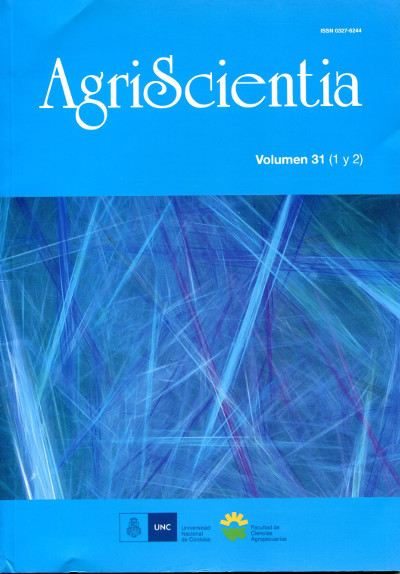Gas exchange and water use efficiency of native cover crops (Mendoza, Argentina), introduced crop species and weeds
Main Article Content
Abstract
Cover crops have been largely used in the soil management of vineyards as an environmentally sustainable tool for diverse purposes. A major limitation for cover crop use is the additional water consumption. Native grasses adapted to low water availability may be a feasible alternative under drip irrigation. The aim of the study was to evaluate water use efficiency and carbon dioxide fixation of three introduced cover crops, two weeds and six native grasses selected from three viticultural regions of Mendoza, Argentina. The experiment was conducted in Lujan de Cuyo, Mendoza, with experimental units (pots) distributed in a completely randomized design with 12 treatments and five replicates. Water consumption following the gravimetric method and gas exchange in whole plant were measured. Native C4 grasses presented the lowest annual water consumption and high water use efficiency under elevated temperature and limited water availability, since evapotranspiration decreased proportionally more than the carbon dioxide fixation. Results obtained under controlled conditions suggest that these native grasses can succeed as interrow cover crops in vineyards under drip irrigation.
Downloads
Download data is not yet available.
Article Details
How to Cite
Uliarte, E., Parera, C., Alessandria, E., & Dalmasso, A. (2014). Gas exchange and water use efficiency of native cover crops (Mendoza, Argentina), introduced crop species and weeds. AgriScientia, 31(2), 49–61. https://doi.org/10.31047/1668.298x.v31.n2.16529
Issue
Section
Articles





